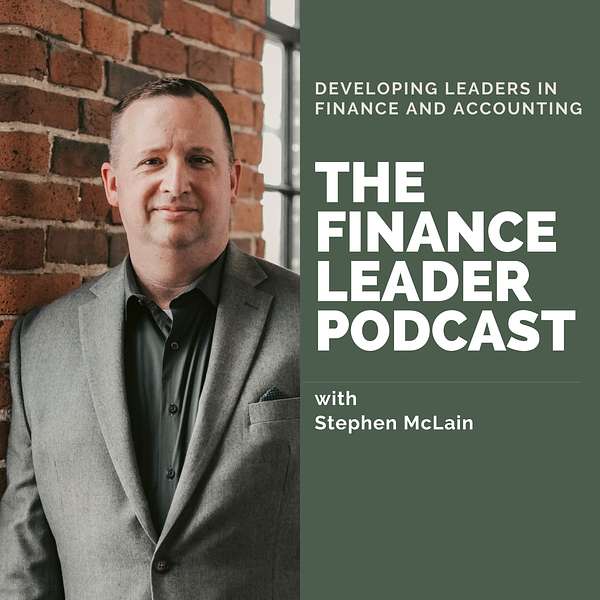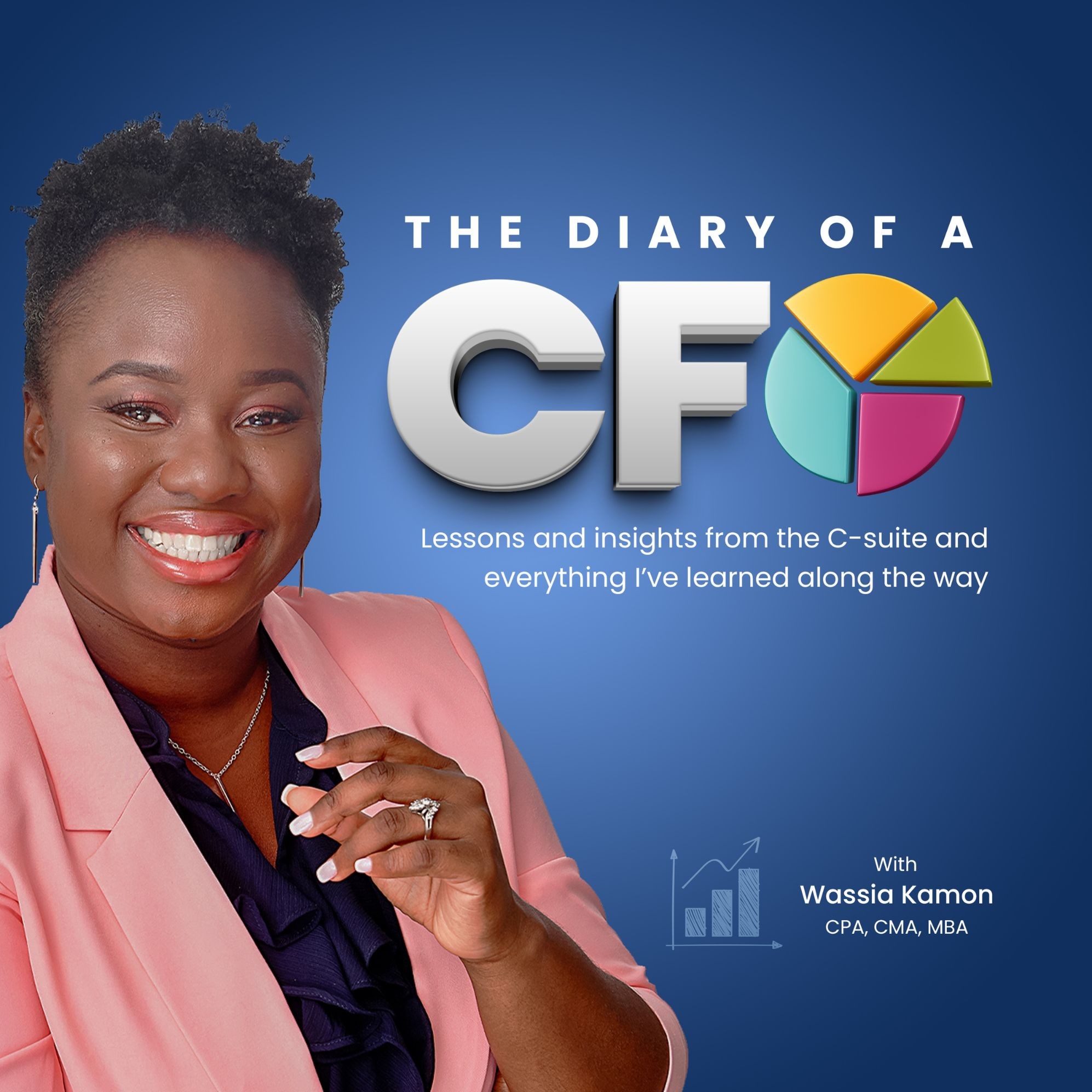
The Finance Leader Podcast
Leadership development can lead to greater promotion potential. This podcast is hosted by Stephen McLain, a U.S. Army-Retired Finance Officer. After retirement, Stephen transitioned to working as a Business Consultant in Corporate Finance and Accounting. Topics will be dedicated to leadership and strategic mindset development for Finance and Accounting professionals, where we will focus on the four key Finance Leader responsibilities: 1) influence, 2) developing our team, 3) achieving results, and 4) seeing the future . Please listen to the trailer so you can check it out. Thank you!
The Finance Leader Podcast
Bonus Ep 74: Elevate Your Small Business and Solopreneur Journey with an Accounting and Finance System that Supports Business Growth
Please download the free workbook that goes with this episode.
This episode will empower you with the insights to pinpoint your ideal customer, refine your services, and secure your competitive edge. We'll navigate through a SWOT analysis and discuss the significance of core values before crafting a strategic statement that's as robust as your ambition. Whether you're a seasoned business owner or just starting, you'll leave with a clearer direction and the tools to make informed decisions that will pave the way for prosperity in 2024. Let's make those goals a reality, shall we?
Please connect with me on:
1. Instagram: stephen.mclain
2. Twitter: smclainiii
3. Facebook: stephenmclainconsultant
4. LinkedIn: stephenjmclainiii
For more resources, please visit Finance Leader Academy: financeleaderacademy.com.
On the website, you can download the Small Business Strategy Guide and Workbook. You can use this guide to evaluate your Small Business Strategy and how your accounting & finance systems can help you make better decisions.
Hi, this is Stephen McLain of the Finance Leader Podcast. This is Bonus Episode number 74. Good day and good week to everyone. I hope everyone had a great holiday time and New Year's celebration.
Stephen McLain:Since this is the start of the new year, it is time for announcing New Year's resolutions, which, if you have been listening to me for a while, you know I don't believe in New Year's resolutions because they often fall apart after a few weeks due to not even having a solid plan around them. There is a declaration without a commitment to a process and usually there is a lack of accountability. I want to help you do better and accomplish those core goals. I believe in goal setting using the smart method. I will discuss more about goal setting next week. I can't wait to share and I can't wait to get started with you for 2024. I know we will accomplish much this year and we will do it with a planning framework that will set us up for success.
Stephen McLain:This week, I want to share an introduction on small business strategy and how you can develop an accounting and finance system to help you achieve your vision, strategy and goals in your business. I don't often focus on small businesses specifically, but there is a real need to help small business owners and solopreneurs understand how an effective accounting and finance system can help them grow their business. So I also want to help this specific community, too. We can develop small business finance leaders in this community, since it's often a greater understanding of the financials and business-related data that can lead to better strategic decisions and, hopefully, improved results in sales and reduced expenses and a healthier allocation of limited resources. So this week I want to provide a short introduction to business strategy, plus an introduction on what accounting and finance system considerations to start thinking about. Your strategy is a roadmap for how you will achieve your business goals, create a competitive advantage and create value for your business.
Stephen McLain:The first thing is who is your ideal customer and target market? Next, how are you going to serve that customer and target market? So what is your product and service mix? Next, and probably most important, is how will you compete? Is there going to be price alone? Better quality, more features, better service, maybe a hybrid of many of these? To be more competitive, you need to find your ideal price. You need to purchase raw materials and services at a more favorable cost, and this helps you track your gross margin and how profitable your business is. The next thing I want you to do is to do a SWOT analysis, that is, to list your strengths, your weaknesses, your opportunities and your threats. Next, I want you to list out your core values. What is important to you on how you support your ideal customer and how you run your business, how you treat your employees? What does your business do to support the local community?
Stephen McLain:The next thing I want you to do is to set your priorities. How will you prioritize your resources to then meet your strategy and, when you get a chance, write out your vision statement. From your answers, then write out a sentence declaring your strategy. How will you compete and serve your ideal customer? And I want to give you an example here. This is a strategic statement for a local coffee shop. We will provide high quality coffee offerings from free trade source coffee bean farms and a super motivational work area space to the local corporate professionals in the downtown area where they can gather for meetings outside their office or work on a project alone. Now, this strategy talks about providing a high quality coffee offering, particularly mentioning where they're going to source the coffee beans and also what type of space that people can enjoy these coffee offerings and also who their ideal customer is going to be. Now I want you to go back and write your strategic statement, identifying again who your ideal customer is, what you're offering, what you're going to offer in addition to that product and service mix, your ideal customer and also how your customer can enjoy your product or your service. Now, to be clear, your business strategy is different from a comprehensive business plan. A strategy is an assessment of your customer and the market you will serve. This helps you determine how you will compete in this market, and you'll need to make important decisions and choices about the resources you do have. Resources include cash, credit, equipment, intellectual property and this also includes your team and how you manage their labor contributions, and also how well you treat them. Your strategy will be part of your business plan if you will also be looking for funding. Now we must link an accounting and finance system to your strategy. Here's a quick introduction. I will discuss more in an upcoming full episode.
Stephen McLain:Number one capture and classify your financial transactions. This is the foundation of any accounting system. You have to know where your money is being spent and know when you are earning revenue. Additionally, you need to categorize your transactions and lump similar ones together so you have more accurate data. This helps not only in knowing about how your money is moving, but also helps in accountability and internal controls. Additionally, along with your cash flow, when you know what is happening with your finances, you can determine and negotiate better raw materials costs. Number two track your cash flow. The foundational lifeblood of any business is cash flow. You need to collect your receivables and pay your bills. You may need to use short-term financing in your business. Tracking your cash flow helps you know how much cash you are burning through and if you need additional cash through receivables collecting or with short-term financing and credit.
Stephen McLain:Number three publish financial statements. At a minimum, you must publish a profit and loss statement showing your revenues less any cost of goods sold and your expenses. If your business is equipment-based or you sell physical products, you should also publish a balance sheet. Ideally, every business should be publishing a balance sheet. Number four budgeting. Please make sure you are producing an annual budget with projected revenues, cost of goods sold, expenses and capital investments, so you have a plan to identify how much you expect to earn and how much you will spend Each month or quarter. Calculate the variances to see how close you were to your projection. The more you perform this exercise, the more accurate you could become in the future. Number five establish internal controls. How are you establishing accountability for your resources? How are you monitoring your physical cash? How are you preventing the theft of your inventory or property? Internal controls help prevent theft from within your business and ensure you are performing a bank reconciliation every month.
Stephen McLain:Number six determine your key business growth metrics and capture related data. Finance is different from accounting because you need to also look at non-financial data to measure effectiveness, like store traffic or clicks or cart abandonments, to figure out what is happening within your business so you can make adjustments. Let's say you own a brick-and-mortar store. You will also want to know sales by hour and day so you know what day and what hours the bulk of your sales occur. You can then adjust work schedules and even opening and closing times. This can maximize your sales by also helping you to be more efficient with your labor. What metrics should you track to make a better business decision with the resources you have and filing? Number seven make assessments and adjust your resource commitments accordingly. The reason we measure our finances is so we can make better decisions to grow the business and to maximize our resources for the best results, measure, assess and make better decisions.
Stephen McLain:I hope this short introductory discussion about how your accounting and finance systems can help you achieve your strategy and help to grow your business. I will expand on this topic in an upcoming episode. Please check out Finance Leader Academy, where you can find some great resources. Please download the free short reference guide I created that goes along with this episode. Again, this guide is free and it will help you to prompt some thoughts and planning regarding what an accounting and finance system can do to help you grow your business. Have a great rest of your week. Thank you for listening to the Finance Leader podcast. Next week, I will be discussing goal setting for 2024. Thank you.

